Now more than ever, facility managers need to consider hygiene practices for worker health and safety—especially in the restrooms. The need for clean, hygienic, and safe restroom environments has never been greater due to the unprecedented spread—and lingering presence—of coronavirus.
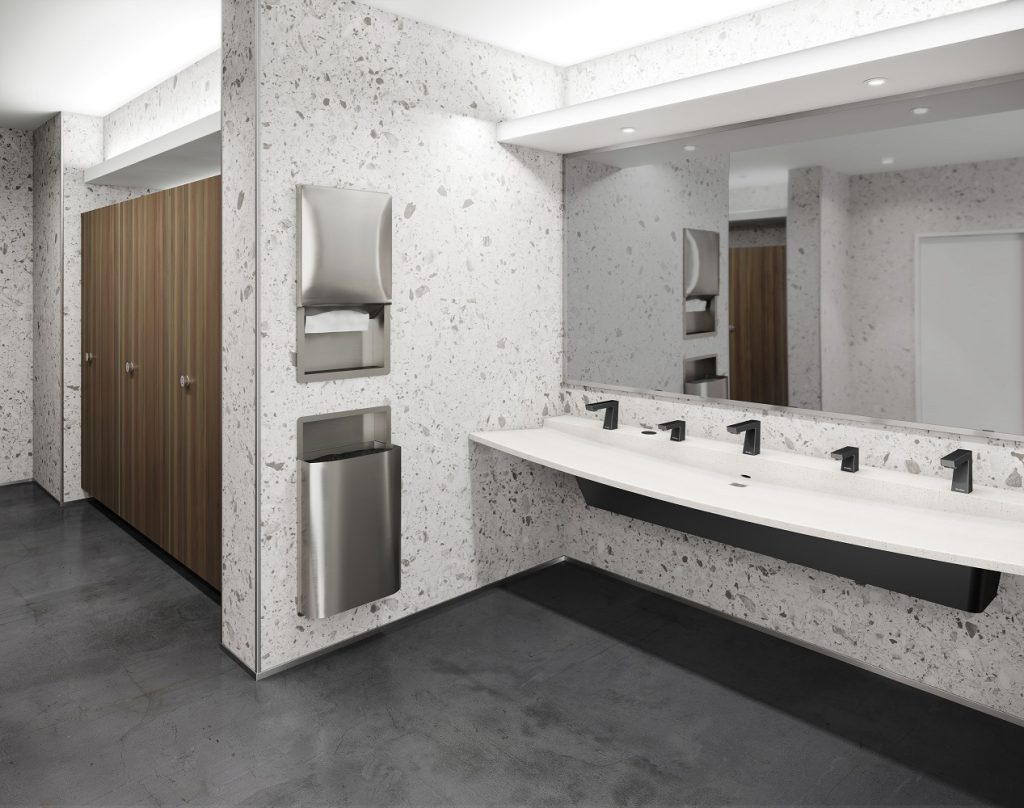
Restrooms are unique in that they are tight, enclosed spaces; have multiple touchpoints (about 10 in a single visit); and utilize water and paper products that can potentially create mess, slips, and falls and breed bacteria.
Still, restrooms are used by many throughout the day, and their condition can either make or break the restroom users’ impression of the overall facility.
In fact, in 2021, 69% of Americans said they would spend more money at a business with a clean and well-maintained restroom, according to the Healthy Handwashing Survey by Bradley Corp. Clearly, the stakes are high when it comes to the maintenance of restrooms.
Today’s facilities are not only following CDC guidance for cleaning and disinfection procedures for restrooms, but also implementing new maintenance procedures and renovating their restrooms with new technologies and products to reduce the spread of germs and help reassure customers their facilities are healthy and safe.
Here are some ways to fast-track infection control in commercial restrooms:
Limit Germs and Promote Cleanliness
Facility managers know all too well that people go out of their way to avoid germs in public restrooms. A fair number of restroom users use their foot to flush the toilet, hover over the toilet seat, and use hip bumps to open and close doors. Unfortunately, some of these actions can jeopardize cleanliness and wreak havoc on equipment.
The Healthy Handwashing survey found that the most popular germ-evasive measure adopted by 63% of Americans is using paper toweling to avoid contact with restroom flushers, faucets, and doors. Therefore, keeping paper towels and waste containers near doorways is a good idea so people can throw the paper towels away upon exiting.
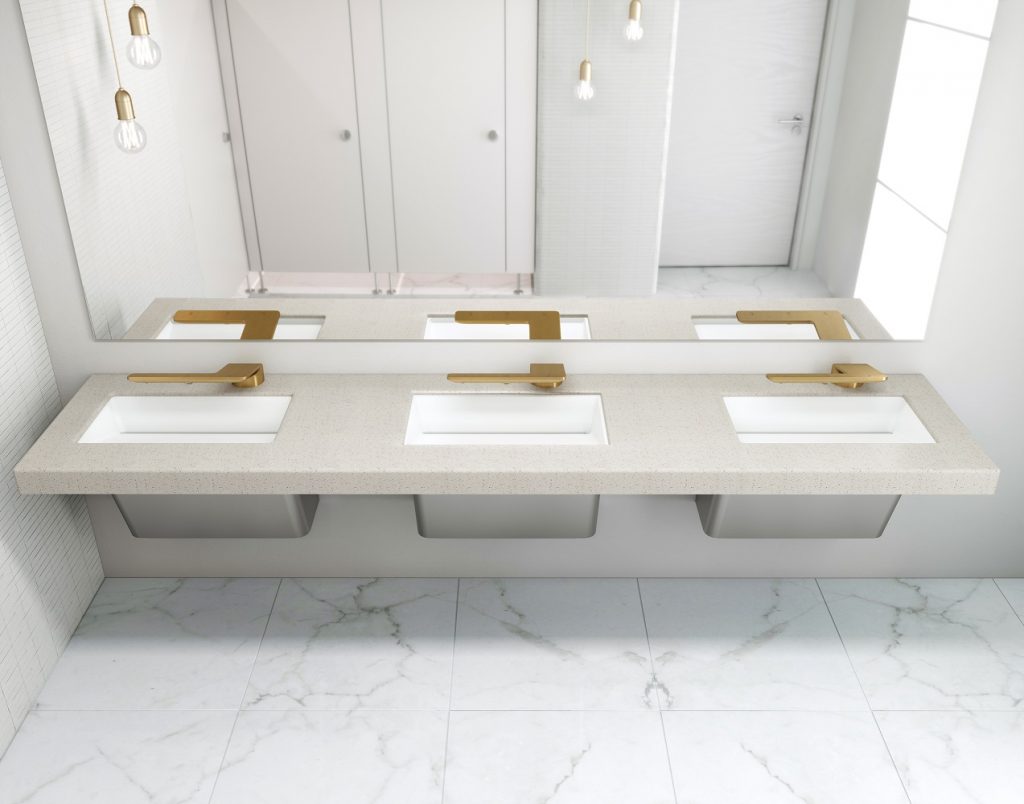
Installing hand sanitizers outside restrooms is another way people can sanitize their hands upon entering and leaving the restroom. Today’s hand sanitizer dispensers can be specified in deck, wall, and stand mounts for multiple needs near restrooms and throughout buildings.
Posting signs in restrooms can be a powerful facility management tool. Further, signage regarding handwashing reminders and cleaning/disinfection protocol will help reassure customers that the facility is taking steps to ensure a clean environment and cares about keeping them safe. Also, consider posting cleaning schedules that are updated and initialed by staff—the Healthy Handwashing Survey found that 81% of Americans consider them to be believable. For private bathrooms that were just cleaned, displaying a seal on the door with a note about it being cleaned is a nice personal touch.
Upgrade to No-Touch Fixtures
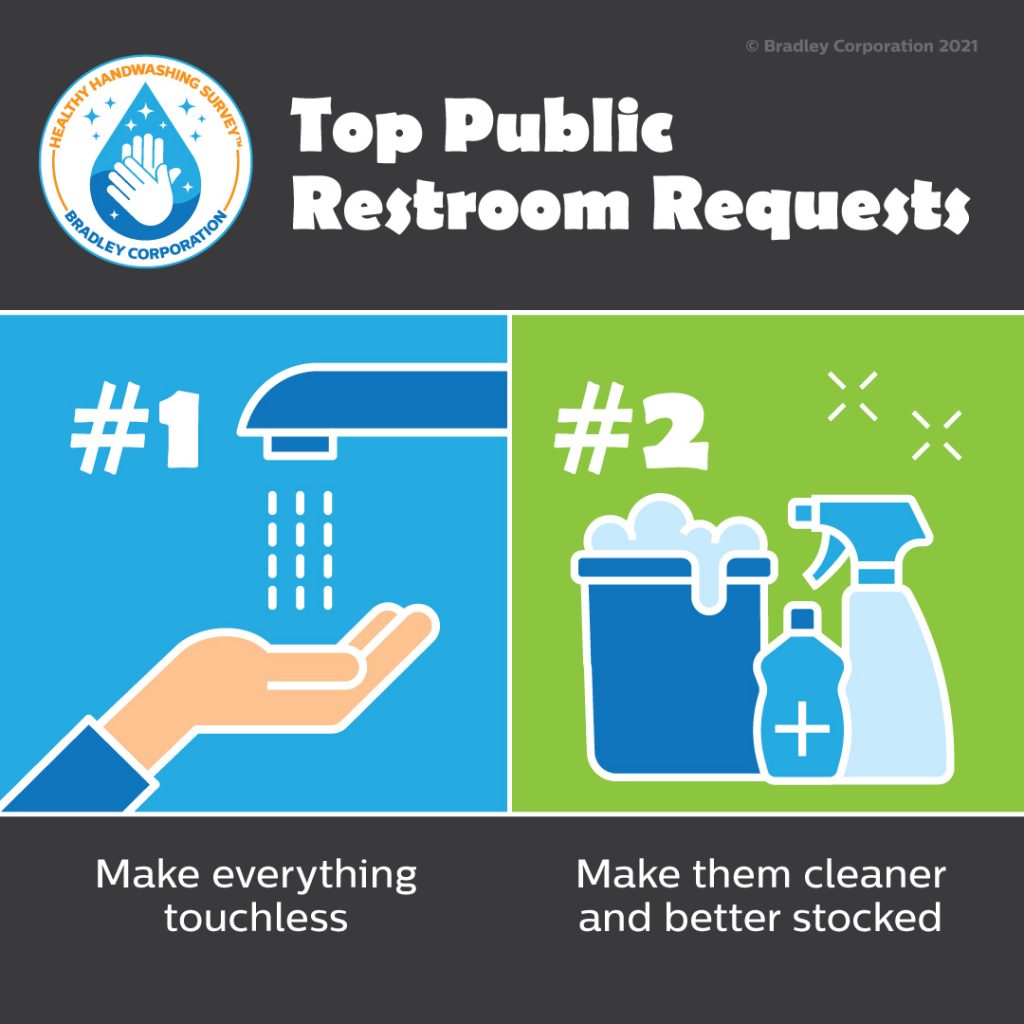
Industry research shows that touchless fixtures, which have been growing in popularity for years due to their hygienic no-touch design and ease of use, are held in high esteem by most Americans. According to the Healthy Handwashing Survey:
- 84% believe it’s important that public restrooms are equipped with touchless fixtures.
- Making everything touchless is Americans’ number-one requested improvement in restrooms (cleaning/restocking is second).
- 69% are more likely to return to a business if it has touchless fixtures in its restrooms.
- 56% say lack of touchless restroom fixtures convey a negative impression of the overall business.
Fortunately, as the demand for touchless fixtures has increased, the mechanicals used in sensored technology have been greatly improved. While some older touchless models include sensors that deliver spotty soap and water activations, today’s designs incorporate advanced sensing technology ensuring continuous and reliable washing.
Other smart technologies like voice command and IoT are other up-and-coming hands-free technologies for restrooms. Automatic door openers typically seen to support accessible design are now also being implemented in locations to prevent hand-surface contact.
Prevent Wet Floors
Water dripping from hands onto floors can cause slips and falls, as well as breed bacteria. To avoid wet floors, locate soap and drying options—and trash containers—close to sinks so people needn’t move from the sink with dripping wet hands.
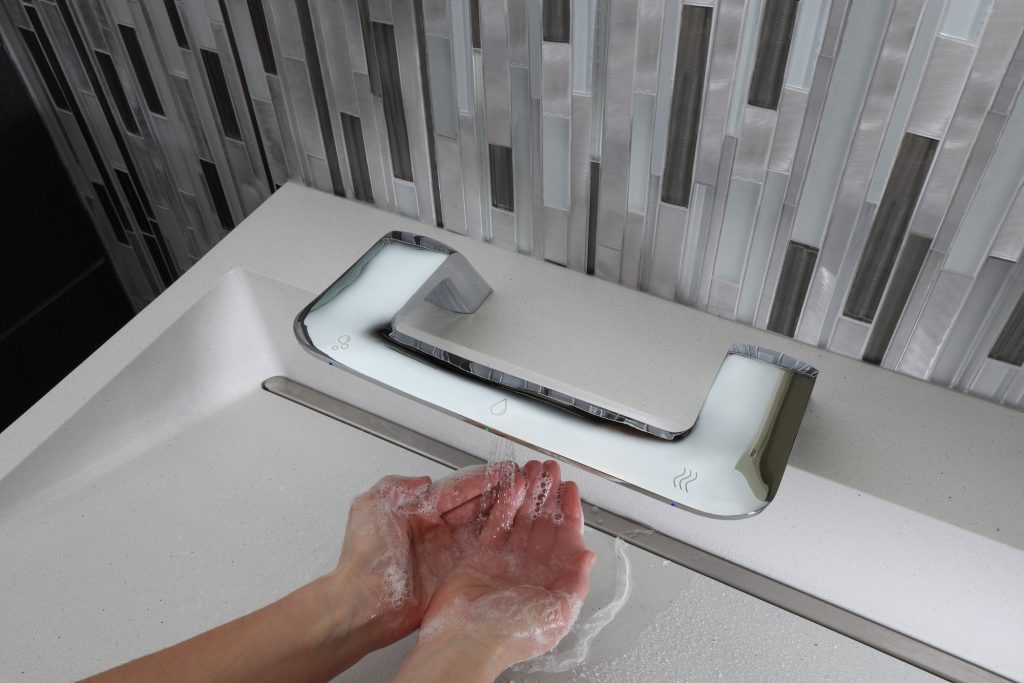
Newer touch-free all-in-one handwashing models, which combine touch-free soap, water, and a hand dryer in one unit, are further improving user accessibility and convenience—and restroom cleanliness and safety. These integrated models are engineered so that the hand dryer and basin work together to keep water inside the basin, eliminating the dripping and splashing of water on floors, walls, backsplashes, and down users’ arms to keep floors drier and safer.
Use Surface Materials that Don’t Support Microbial Growth
For sinks, using smooth and nonporous materials with seamless construction like solid surface and natural quartz helps prevent bacteria, mold, and delamination accumulation and growth. These materials can be easily cleaned, disinfected, repaired, and reused, and they have a longer lifecycle. These sustainable materials are cast-formed so they are able to be specified in many attractive shapes and forms. For multi-user restrooms, new washbasin designs with increased space between the handwashing areas allow for social distancing while washing hands.
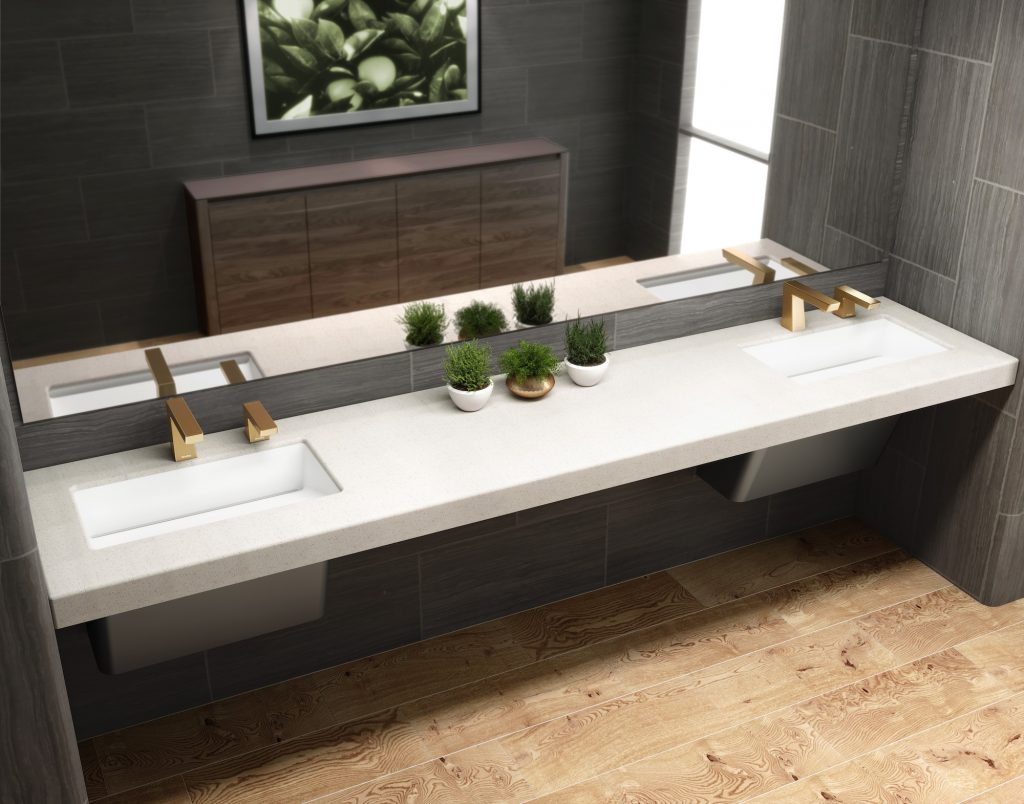
For soap and faucet fixtures, PVD coatings are not only a more sustainable way to finish metals than traditional electroplating; they are inherently antimicrobial. These popular and attractive finishes are produced with physical vapor deposition (PVD), an advanced process that creates a molecular bond to the fixture, creating a resilient coating that will not corrode or fade.
Clearly, there is no single solution today to make restrooms completely germ-free, so facility managers and designers are experimenting with a variety of functional changes and upgrades. But one thing is for sure: Just like the iPod forever changed music and 9/11 changed air travel, COVID will forever change public bathroom design and maintenance. Fortunately, there are many new solutions that are being fast-tracked to provide users with a safe and healthy public bathroom experience.
Kris Alderson is senior marketing manager at Bradley Corp., a manufacturer of commercial plumbing fixtures, washroom accessories, restroom partitions, emergency fixtures, and solid plastic lockers. (All images courtesy of Bradley Corp.)
